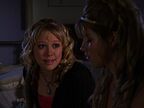-
Chelsea 2022-01-06 08:02:07
Devil and Angel
I read a commentary on "The Devil's Epidemic" in Ming Pao before. It said that the story of this movie is science vs. religion, but it is very unreliable because of its superstition. So I thought this movie might have the same nature as "Into Pseudoscience". But after reading it, I realized that...
-
Edwina 2022-01-06 08:02:07
Retribution-unfinished
It seems that after coming to Dalian, I haven't watched a new movie for more than two months,
even though there is Chibi outside (it was called "Fart" at first...)
and Mummy 3,
but I suddenly wanted to watch a Japanese and Korean thriller,
uh... After flipping for a long time, I didn’t find
Hilary...
Extended Reading
Related articles
-
Loren McConnell: What about the boy?
Katherine Winter: What boy?
Loren McConnell: The baby. The one inside you. I can hear him. We've got to take care of him too.
-
Ben: [after Katherine wakes up] Morning. Sleep at all last night?
Katherine Winter: Yeah. Where are we?
Ben: Far enough that all I'm getting is this guy.
[tunes the radio and a song plays that's apparently supposed to be crummy]



















































